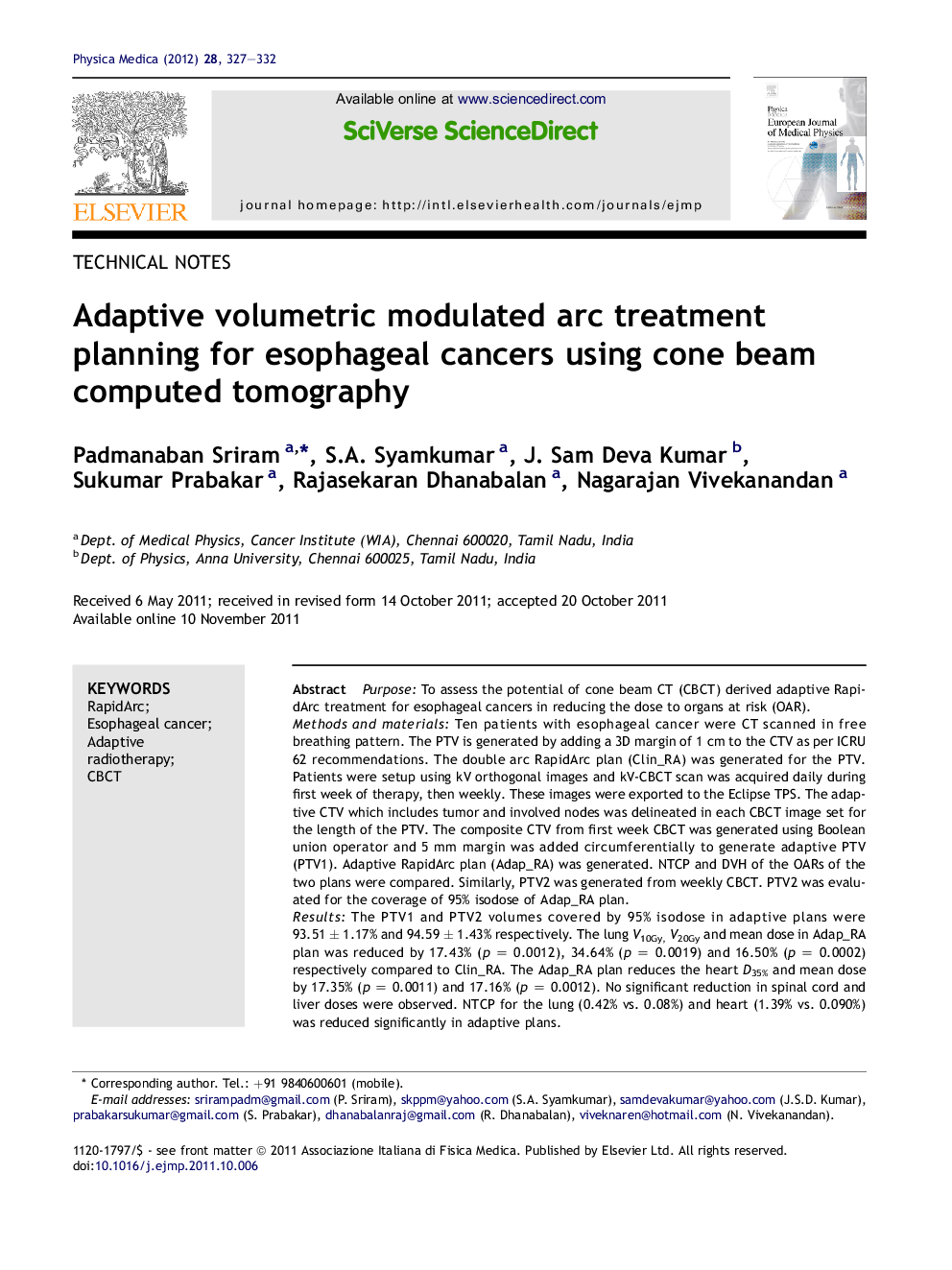| Article ID | Journal | Published Year | Pages | File Type |
|---|---|---|---|---|
| 1883452 | Physica Medica | 2012 | 6 Pages |
PurposeTo assess the potential of cone beam CT (CBCT) derived adaptive RapidArc treatment for esophageal cancers in reducing the dose to organs at risk (OAR).Methods and materialsTen patients with esophageal cancer were CT scanned in free breathing pattern. The PTV is generated by adding a 3D margin of 1 cm to the CTV as per ICRU 62 recommendations. The double arc RapidArc plan (Clin_RA) was generated for the PTV. Patients were setup using kV orthogonal images and kV-CBCT scan was acquired daily during first week of therapy, then weekly. These images were exported to the Eclipse TPS. The adaptive CTV which includes tumor and involved nodes was delineated in each CBCT image set for the length of the PTV. The composite CTV from first week CBCT was generated using Boolean union operator and 5 mm margin was added circumferentially to generate adaptive PTV (PTV1). Adaptive RapidArc plan (Adap_RA) was generated. NTCP and DVH of the OARs of the two plans were compared. Similarly, PTV2 was generated from weekly CBCT. PTV2 was evaluated for the coverage of 95% isodose of Adap_RA plan.ResultsThe PTV1 and PTV2 volumes covered by 95% isodose in adaptive plans were 93.51 ± 1.17% and 94.59 ± 1.43% respectively. The lung V10Gy,V20Gy and mean dose in Adap_RA plan was reduced by 17.43% (p = 0.0012), 34.64% (p = 0.0019) and 16.50% (p = 0.0002) respectively compared to Clin_RA. The Adap_RA plan reduces the heart D35% and mean dose by 17.35% (p = 0.0011) and 17.16% (p = 0.0012). No significant reduction in spinal cord and liver doses were observed. NTCP for the lung (0.42% vs. 0.08%) and heart (1.39% vs. 0.090%) was reduced significantly in adaptive plans.ConclusionThe adaptive re-planning strategy based on the first week CBCT dataset significantly reduces the doses and NTCP to OARs.
